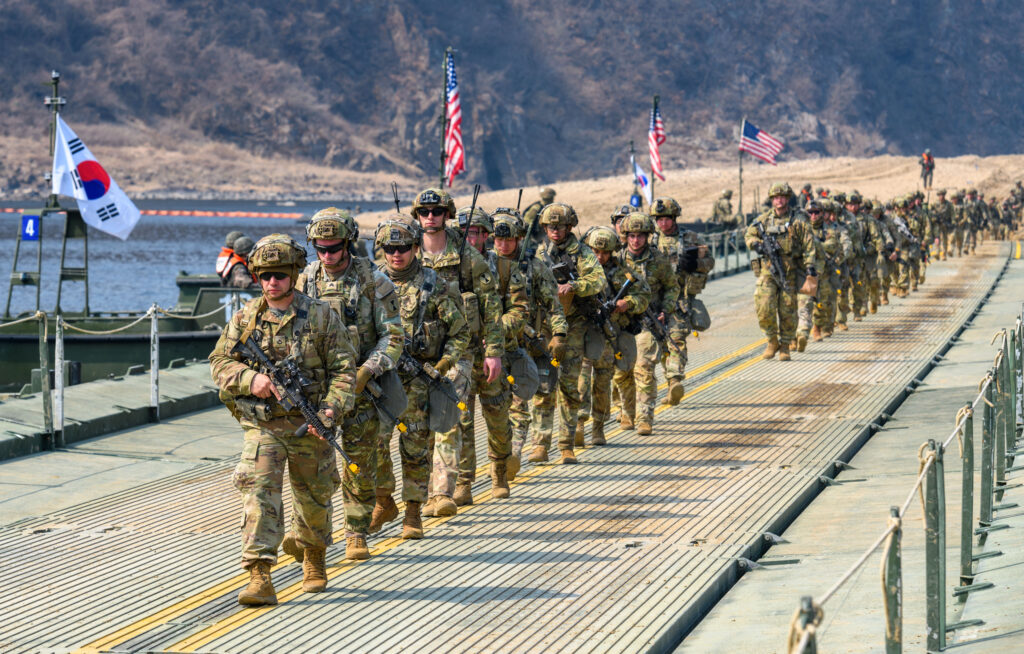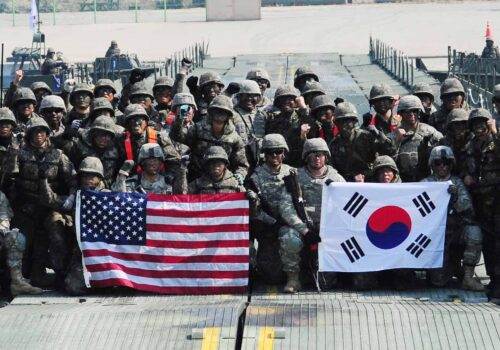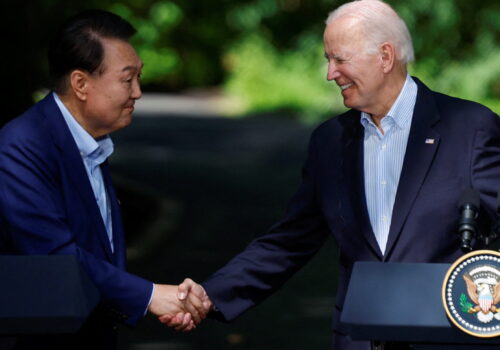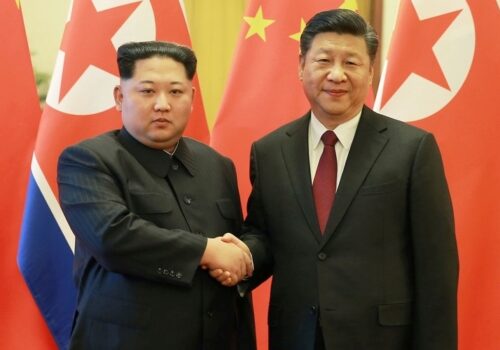
Click on the banner above to explore the Tiger Project.
SEOUL—Even as Washington’s attention is fixed on the Middle East this week, Korea may soon rocket back to the top of the White House’s agenda. North Korean leader Kim Jong Un could, for example, respond to US President Donald Trump’s reported interest in reengaging him either by launching a public confrontation punctuated by a new weapons tests or by suddenly offering a summit. Another possibility is that North Korea escalates against South Korea simply because it senses an opportunity. Yet another is that a regional crisis triggered by China has ripple effects for deterrence and the US military presence on the Korean Peninsula. Regardless of the cause, Washington’s ability to achieve its goals in such situations will in large part be determined by the strength of its alliance with Seoul.
With South Korean President Lee Jae-myung just beginning his term, and with Trump having not yet laid out his second-term plans for Korea issues, the time is ripe for Washington to engage Seoul. The two countries’ goal should be to set a new foundation for the alliance, one that reflects the current strategic environment. The US-South Korea alliance is often spoken about as being “born in blood” when the United States intervened to help defend South Korea after North Korea attacked in 1950. With the seventy-fifth anniversary of the start of the war upon us, it is time to honor that legacy but move beyond it.
Lee and Trump will have to lead this effort, but new politicos and old hands alike will need to work together to help achieve real transformation in the alliance. Neither side should default to old formulas and platitudes. For years, Washington has referred to the venerable alliance as “ironclad” as a reassurance to Seoul. But just as ironclad warships look powerful but are out of date, the alliance and its description should be updated to meet the demands of the times. As one US defense official reportedly put it in late May, it is time to “modernize” the alliance and “calibrate” the US force posture on the peninsula. Perhaps “titanium” is a more appropriate description of what the alliance should become, and below is how this change should start.
Posture check
One foundational issue with the alliance must be addressed as soon as possible: US military posture in Korea, which includes its size, its composition, its missions, and the associated cost-sharing. In addition, it must also include how US posture affects the alliance’s approach toward China. Conventional wisdom from both political parties in Washington and in Seoul is that the Trump administration is looking at cutting the US troop presence in South Korea. Informed observers expect that, at minimum, the administration will ask for more cost-sharing for this presence, given Trump’s comments suggesting that he would negotiate with South Korea on “payment for the big time military protection we provide.” At the same time, South Koreans’ longstanding concerns about being either abandoned or entrapped during a US-China war are coming back to the forefront.
Through the Special Measures Agreement (SMA), South Korea does pay a sizable portion of the costs of stationing roughly 28,000 US military members in South Korea. According to US Forces Korea, Seoul contributes around 18 percent, across all US military expenditures in Korea, which in 2026 will add up to the impressive sum of about $1.2 billion. However, past statements from Trump criticizing this agreement and citing a $10 billion figure suggest that he will still deem this amount insufficient.
These numbers are not the whole story, however. Despite bristling by some South Koreans at past demands by Trump for Seoul to pay more, this amount does not come in the form of a direct transfer to the US Treasury as though this is “protection money” or these personnel are Hessian mercenaries for hire. Under the SMA, these funds are mostly spent on goods and services provided by South Korean individuals and companies to sustain the US force presence. In other words, while they benefit the alliance, they are largely domestic subsidies for South Korea’s economy.
Moreover, the real cost, value, and investment of the US defense commitment to South Korea is hardly captured by the roughly 28,000 uniformed military personnel of US Forces Korea. This number is largely designed to provide a framework and sustainment for a much larger presence in a wartime scenario rather than combat power in its own right. Combined with large bases, supporting infrastructure, and many supporting civilian officials and contractors, this relatively small number of military personnel is essentially the down payment for a much larger commitment of forces—including the US nuclear deterrent—that helps deter North Korea and that would ensure Pyongyang’s defeat in a war. US Forces Korea’s presence, including US and South Korean personnel intermixed in bilateral facilities, also serves a “tripwire” function to strengthen deterrence, because a large-scale attack by North Korea (or China) would end up engulfing US forces immediately, pulling the United States directly into the fight.
The SMA is a good deal for South Korea, and it still would be even at a much higher price. South Koreans may not want to pay more, but they could contribute much more to defraying the cost of the US military presence without it being a major economic burden given South Korea’s gross domestic product of over $1.7 trillion. The United States undoubtedly benefits strategically from maintaining deterrence against North Korea—thereby enabling regional stability, peace, and prosperity—but South Korea benefits even more from keeping this direct threat at bay.
Beyond ‘ironclad’
Stationing US forces and having major bases in South Korea provide the United States strategic benefits beyond helping to deter North Korean aggression. As General Xavier Brunson, the US Forces Korea commander, noted in May, stationing forces in South Korea helps overcome the “tyranny of distance” given the size of the Indo-Pacific and Korea’s key location in the region.
Relocating those US forces elsewhere would be expensive, and there are not great options in the region for where to send them. In South Korea, the US forces have excellent opportunities to train and directly contribute to the regional stability that is vital for US and South Korean prosperity. In particular, the facilities in South Korea are key logistics hubs for the broader US presence in the Indo-Pacific, and the prospect of such bases being used to support the defense of Taiwan could help deter Beijing from aggression—particularly given the bases’ proximity to China.
But this value can only be realized if there are mutual reassurances about how the alliance will function in the event of a US-China war. As I outlined in a memo published last year, the South Korean president should at least tacitly affirm that Seoul will adhere to the 1953 mutual defense treaty as a two-way treaty, not just a commitment by the United States to defend South Korea against North Korea. If, for example, the United States were to come to the defense of Taiwan and China responded with strikes against US bases, particularly on the US territory of Guam, then South Korea must recognize that the United States could not accept Seoul remaining neutral and US Forces Korea being mere ringside spectators.
Regardless of Lee’s desire to avoid antagonizing Chinese President Xi Jinping, it is hard to imagine the Trump administration accepting that Washington must be willing to risk a nuclear attack by North Korea to save Seoul while South Korean forces, along with US forces and bases stationed in South Korea, are to remain idle while Americans are dying from Chinese missile attacks. For years, Washington has been deferential to South Korean sensitivities on this issue, and on the issue of “strategic flexibility” for US forces in South Korea, even when dealing with ostensibly “hawkish” administrations in Seoul. Now, however, it makes little sense that this should or could continue—particularly with a new US administration so clearly prioritizing deterrence of China and so clearly tired of allies taking the US commitment to their defense for granted.
The Trump and Lee administrations will need to address contentious issues around South Korea’s financial, political, and military commitment to the alliance in a mutually equitable way, supported by a robust and modernized combined US-South Korea defense and military structure. If they can do this, then they can set the stage for a new, stronger, and mutually beneficial alliance that will be better able to keep the fragile regional peace threatened by both nuclear-armed North Korea and China.
However, if the coming months reveal deep rifts between Seoul and Washington on the US presence in South Korea, this may itself lead to a new crisis, as Pyongyang and Beijing could see an opportunity to fracture an alliance that they view as brittle. When put to the test, the US-South Korean alliance should move beyond its “ironclad” legacy and be ready to hold up with the strength of titanium.
Markus Garlauskas is the director of the Indo-Pacific Security Initiative at the Scowcroft Center for Strategy and Security, leading the Council’s Tiger Project on War and Deterrence in the Indo-Pacific. He is a former senior US government official with two decades of service as an intelligence officer and strategist, including as chief strategist for US Forces Korea. He posts as @Mister_G_2 on X.
The Tiger Project, an Atlantic Council effort, develops new insights and actionable recommendations for the United States, as well as its allies and partners, to deter and counter aggression in the Indo-Pacific. Explore our collection of work, including expert commentary, multimedia content, and in-depth analysis, on strategic defense and deterrence issues in the region.
Further reading
Fri, May 30, 2025
New presidents and new nuclear developments test the United States–Republic of Korea alliance
Issue Brief By
In the coming years, the US-South Korea (Republic of Korea, or ROK) alliance is likely to be tested in at least three fundamental ways: by a concerning growth in North Korea’s nuclear and ballistic missile weapons program; by changes to ROK defense capabilities and structures, including the establishment of ROK Strategic Command (ROKSTRATCOM); and by potential strategy and policy changes under new US and ROK political administrations.
Wed, Jan 31, 2024
A US-South Korea alliance strategic memo on reassurance and coordination for a China conflict
Issue Brief By Markus Garlauskas, Lauren D. Gilbert
Washington and Seoul have drawn closer together in recent years, but concerns remain about what role the alliance would play in a US-China military conflict. The US and South Korea should take these steps to address this sensitive question.
Fri, Feb 7, 2025
Toplines: The United States and its allies must be ready to deter a two-front war and nuclear attacks in East Asia
Report By Markus Garlauskas
The "toplines" from Markus Garlauskus' report on two emerging and interrelated deterrence challenges in East Asia with grave risks to US national security.
Image: U.S. Army soldiers cross a pontoon bridge on the Imjingang River during a joint river-crossing exercise between South Korea and the United States as a part of the Freedom Shield military exercise in the South Korean border town of Yeoncheon, north of Seoul, South Korea. Matrix Images/Lee Sang-hoon via Reuters Connect.




